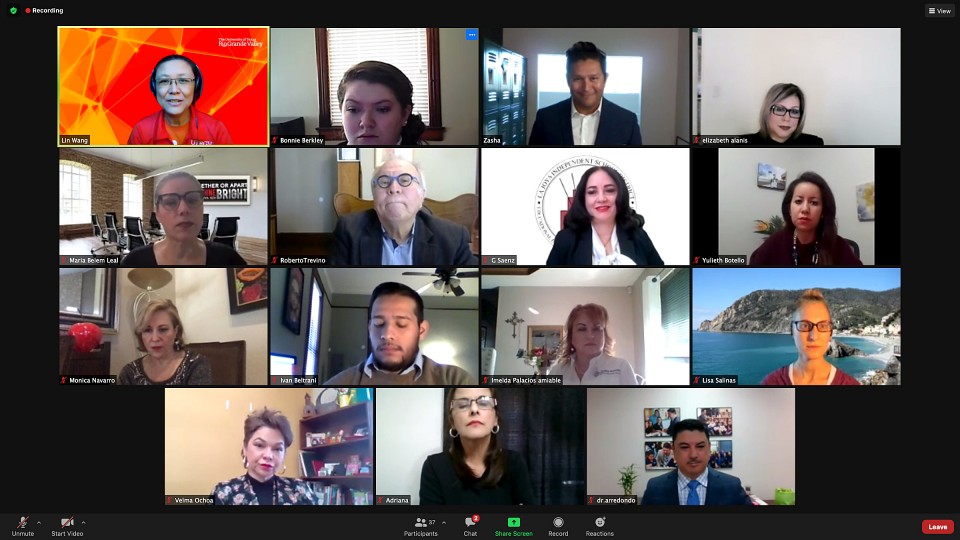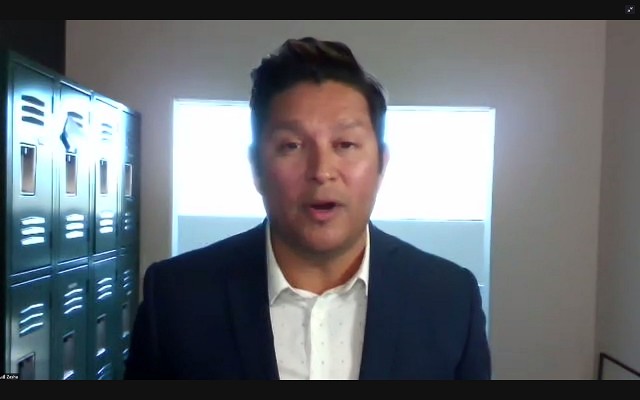By Amanda Taylor
RIO GRANDE VALLEY, TEXAS – DEC. 11, 2020 – Childhood obesity is a major public health concern, one that disproportionately effects populations living in poverty and the minority groups prevalent in the Rio Grande Valley.
To help understand the impact on the area, UTRGV’s South Texas Early Prevention Study-PreK (STEPS-PreK) collected social, economic and health measures of more than 1,200 preschool children and their families living along the Texas-Mexico border.
The study, “Social and Health Risk Factor Levels of Preschool Children Living Along the Texas-Mexico Border,” was funded by U.S. Health & Human Services and provided feedback to design and evaluate health interventions. The study was a randomized trial designed to assess the effect of the Bienestar Coordinated School Heath Program on preschool children’s health outcomes.
Presenters during the virtual press conference Dec. 9 included UTRGV’s Dr. Zasha Romero, associate professor of Health & Human Performance in the UTRGV College of Health Professions; Giesela Saenz, superintendent of the La Joya school district; Jorge L. Arredondo, superintendent of the PSJA school district; and Dr. Robert P. Treviño, an MD at the Social & Health Research Center in San Antonio.
“It is no secret that the Rio Grande Valley has extremely high rates of poverty. Poverty is a medium that fosters adverse health outcomes in children,” Romero said.
“Children from poor families have near twice the risk of obesity compared to their affluent counterparts. Compared to the state, Hidalgo County has higher rates of people living in poverty – 17.5 percent versus 34 percent of the entire state. In the U.S., childhood obesity is a public concern that disproportionately affect populations from low economic status.”
The data presented consisted of social, economic and health measures in which nearly half of the participants reported food insecurity before the end of each month. The data were collected before the COVID-19 pandemic, so participants expect this nutritional deficiency to be even worse now.
Early-age health education programs aimed at children, families and school staff are needed. One such program, the Bienestar/Neema Coordinated School Health Program, a Texas Education Agency-approved health program, consists of parent, food service, health and PE curriculums that have been shown to improve the nutrition, fitness and health of children, according to the National Cancer Institute, Agency for Healthcare Research and Quality, and Centers for Disease Control and Prevention.
During the conference, participants agreed that, while school districts do their share in educating children on the importance of healthy foods, parents and the community need to take part in these growing endeavors. Because parents are role models for their children, they themselves should practice healthy behaviors, and community endeavors should include making food of high nutrient value more readily available.
“In recent years, schools have employed nutritionists and dieticians to ensure healthy diets and healthier meals for their students,” Romero said. “Before commencing our research, we conducted pilot studies and found that, though students were served healthy options, fruits and vegetables mostly ended up in the trash bin after every meal, period. Those foods contain nutrients that children need for learning and growing up strong.”
Familiarizing school-age children with a wider variety of fruits and vegetables, and participating in cooking with them, will help get children more enthusiastic about eating a healthier diet, Romero said.
The overall study will be published in the Journal of School Health.
ABOUT UTRGV
The University of Texas Rio Grande Valley (UTRGV) was created by the Texas Legislature in 2013 as the first major public university of the 21st century in Texas. This transformative initiative provided the opportunity to expand educational opportunities in the Rio Grande Valley, including a new School of Medicine and a School of Podiatry, and made it possible for residents of the region to benefit from the Permanent University Fund – a public endowment contributing support to the University of Texas System and other institutions.
UTRGV has campuses and off-campus research and teaching sites throughout the Rio Grande Valley including Brownsville (formerly The University of Texas at Brownsville campus), Edinburg (formerly The University of Texas-Pan American campus), Harlingen, Weslaco, McAllen, Port Isabel, Rio Grande City and South Padre Island. UTRGV, a comprehensive academic institution, enrolled its first class in the fall of 2015; the School of Medicine welcomed its first class in the summer of 2016, and the School of Podiatric Medicine in the fall of 2022.


